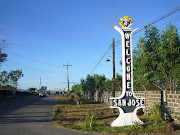I am a dumbbell when it comes to forest biodiversity but as a
pro-environment advocate, I am trying to grasp it little-by-little and to
borrow from the Beatles, with a little help from my friends in the forestry
sector like Charlou Ormega of Haribon. Allow me to take off from National
Greening Program or NGP. The NGP is a massive forest rehabilitation program of
the government established by virtue of Executive Order No. 26 issued on
February 24, 2011 by President Benigno S. Aquino III. It seeks to grow and
maintain 1.5 billion trees in 1.5 million hectares nationwide within a period
of six years, from 2011 to 2016. The intention is sacred but its malevolence
lies in its specifications.
Allow
me to say this as a starter: The NGP only made worse many reforested areas
because biologically diverse forests have been replaced with single species planted
for commercial purposes such as palm oil, rubber and cacao plantations.
Fast-growing exotic and invasive species like large leaf mahogany and
eucalyptus included. Deep inside our forests, these “alien” species have
invaded us!
Only
last year, even the Intex Resources Philippines, Inc. a Norwegian nickel mining
company based in Mindoro initiated the “Livelihood Enhancement through
Agro-Forestry” or LEAF saying initially that it’s the company’s response to government’s
call for private sector participation in the NGP. Last year, in Sablayan Prison
and Penal Farm (SPPF), a total of 17-hectare demonstration farm and nursery for
coffee and rubber trees can be found. Also last year, Intex received a
certificate of recognition from Mines and Geosciences Bureau Region IV-B
Director Roland de Jesus, for the company’s “continuous
support and very satisfactory accomplishment in the implementation of the
National Greening of Program of the Administration of President Aquino geared
towards poverty alleviation in the countryside and climate change mitigation
and adaptation.” Nice achievement though at hindsight. Like mining, these
species tend to ingress our forests and other natural resources.
The
NGP the way it is implemented then and now is not reforestation but plantation.
Aside from being a reforestation initiative, it is also designed to reduce
poverty, providing alternative livelihood activities for marginalized upland
and lowland households relating to seedling production and care and maintenance
of newly-planted trees. But the question of sustainability and its contribution
to biodiversity need concrete answers. As mitigation strategy to climate
change, the NGP is no doubt helpful and the DENR deserves a tap on its shoulder
for that.
But
since the NGP holds true to the concepts plantations rather than reforestation,
it produces negative effects in terms of biodiversity. The exotic and evasive
species that the NGP are propagating are vulnerable to pest attacks and unable to
restore the old, endemic rain forest species. Problems have only gotten worse in
many reforested areas because biologically diverse forests have been replaced
with single species planted for commercial purposes.
Invasive
species are a major threat to our environment because they can change habitats
and alter ecosystem function and ecosystem services; crowd out or replace
native species; and damage human activities. In fact, the most common species introduced
through the NGP are considered a greater threat to biodiversity by causing
disease, acting as predators or parasites or as competitors to endemic species,
altering habitat or hybridizing with local species.
In
2004, DENR issued Memo Circular No. 6 saying that it is state policy to manage
and restore “forests approximate their
original structure and functions, and conserve the biological diversity.” But
that is only on paper. Denuded areas were instead planted with fast-growing
exotic species from big-leaf mahogany teak to Moluccan sau or falcata and
eucalyptus.
The
NGP is true to its name for it concerns only in greening…
--------
(Photo : Sablayan Herald)







No comments:
Post a Comment